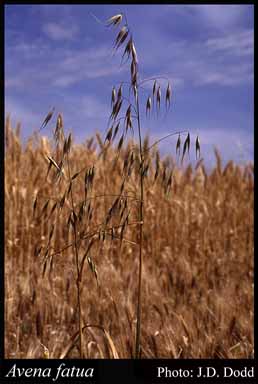- Reference
- Sp.Pl. [Linnaeus] 1:80 (1753)
- Conservation Code
- Not threatened
- Naturalised Status
- Alien to Western Australia
- Name Status
- Current
Erect annual, grass-like or herb, 0.6-0.9 m high. Fl. green, Aug to Dec. Brown clayey sand, heavy, red loam.







Distribution
- IBRA Regions
- Avon Wheatbelt, Esperance Plains, Geraldton Sandplains, Gibson Desert, Jarrah Forest, Murchison, Swan Coastal Plain, Yalgoo.
- IBRA Subregions
- Eastern Murchison, Fitzgerald, Geraldton Hills, Katanning, Lateritic Plain, Merredin, Perth, Southern Jarrah Forest, Tallering.
- IMCRA Regions
- Abrolhos Islands, Central West Coast, WA South Coast.
- Local Government Areas (LGAs)
- Albany, Beverley, Busselton, Cambridge, Capel, Chapman Valley, Dalwallinu, Dardanup, Dowerin, Esperance, Goomalling, Greater Geraldton, Kellerberrin, Koorda, Kwinana, Manjimup, Merredin, Mingenew, Moora, Mount Magnet, Mount Marshall, Narembeen, Narrogin, Ngaanyatjarraku, Northam, Perenjori, Ravensthorpe, Swan, Toodyay, Trayning, Wanneroo, Wongan-Ballidu, Yalgoo.
Management Notes (for the Swan NRM Region)
General Biology. Growth form. Grass. Life form. Annual, caespitose. Reproduction. Seed. Dispersal. Mammals, agricultural machinery, possibly wind (local disperal only). Photosynthetic Pathway. C3. Seedbank persistence. 6 months to 6 years, shorter if not buried. Fire response. Mature plants likely killed, but post-fire conditions favour seed germination and growth.
Notes. Highly competitive, matures rapidly and sheds seed early. Produces prolific seed. Approximately 40% of the seedbank germinates after opening rains and a further 30% later in the season, with germination continuing until the end of spring. Seeds have a large germination window and will germinate in temperatures of 10-26.5 degrees celsius. Self-pollinated with some out-crossing. Most seeds fall within 1-2 metres of the parent plant. Seeds have a hygroscopic awn, with varied dormancy depending on burial depth. Has staggered germination. Smoke can stimulate seedling emergence. Persistence is longer in undisturbed soil and deeper burial favours longer dormancy. Dead material is reported to be allelopathic. Has recorded widespread herbicide resistance.
Additional information. Origin. Mediterranean/North Africa, Eurasia, Europe. History of use/introduction. Contaminant of grain. Similar exotic species. Avena barbata.
Suggested method of management and control. Spray at 3-5 leaf stage with Fusilade® Forte at 16 ml/10 L + wetting agent or for generic fluazifop-p (212g/L active ingredient) 10ml/10L or 500ml/ha + wetting agent. Repeat treatment over following 2 years. Prevent seed production and seedbank inputs each year. In small infestations hand removal may be feasible. Read the manufacturers' labels and material safety data sheets before using herbicides. For further information consult the Australian Pesticides and Veterinary Medicines Authority to determine the status of permits for your situation or state.
Management Calendar
| Calendar Type | Jan | Feb | Mar | Apr | May | Jun | Jul | Aug | Sep | Oct | Nov | Dec | Comments |
|---|---|---|---|---|---|---|---|---|---|---|---|---|---|
| Active Growth | Y | Y | Y | Y | Y | Y | |||||||
| Germination | Y | Y | Y | Y | Y | Y | Y | ||||||
| Flowering | Y | Y | |||||||||||
| Fruiting | Y | Y | Y | ||||||||||
| Optimum Treatment | O | Y | Y | O | 3-5 leaf stage |
Legend: Y = Yes, regularly, O = Occasionally, U = Uncertain, referred by others but not confirmed.
References
- Barraso, J., Navarrete, L., Sanchez del Arco, M.J., Fernandez-Quintanilla, C., Lutman, P.J.W., Perry, N. & Hull, R.I. (2006) Dispersal of Avena fatua and Avena sterilis patches by natural dissemination, soil tillage and combine harvesters. Weed Research, 46 (2): 118-128 Blackwell Publishing.
- Baskin, C.C. & Baskin, J.M. (1998) Ecology of seed dormancy and germination in grasses. In Population biology of grasses (ed. G.P. Cheplick) . Cambridge University Press, Cambridge, UK.
- Bond, W., Davies, G. & Turner, R. (2007) The biology and non-chemical control of Wild-oat (Avena fatua L.). Organic Weed Management Project, UK. URL: http://www.gardenorganic.org.uk/organicweeds - Accessed August 2009.
- Brown, K. & Brooks, K. (2002) Bushland Weeds: A Practical Guide to their Management. Environmental Weeds Action Network, Greenwood.
- Carr, G.W., Yugovic, J.V. & Robinson, K.E. (1992) Environmental weed invasions in Victoria. Department of Conservation and Environment, Melbourne.
- HEAR.org (2009) Global Compendium of Weeds Avena fatua (Poaceae). URL: http://www.hear.org/gcw/species/avena_fatua/ - Accessed August 2009.
- Hobbs, R.J., Arnold, G.W. & Leone, J. (1993) Weed control and rehabilitation. CSIRO Division of Wildlife and Ecology, Midland. Final report to World Wide Fund for Nature for Project P146.
- Hussey, B.M.J., Keighery, G.J., Dodd, J., Lloyd, S.G. & Cousens, R.D. (2007) Western Weeds. A guide to the weeds of Western Australia. 2nd Edition. The Plant Protection Society of Western Australia, Victoria Park.
- Kropac, Z., Havranek, T. & Dobry, J. (1986) Effect of duration and depth of burial on seed survival of Avena fatua in arable soil. Folia Geobotanica & Phtyotaxonomica, 21 (3): 249-262.
- Moore, C.B. & Moore, J.H. (2002) Herbiguide, the pesticide expert on a disk. Herbiguide, PO Box 44 Albany, Western Australia, 6330.
- Moore, J.H. & Wheeler, J. (2008) Southern weeds and their control. DAFWA Bulletin 4744.
- Murrimbidgeee CMA (2008) Best management practices for dryland cropping systems - Wild Oats (Avena spp.). Australian Government, NSW DPI, Murrumbidgee CMA URL: http://www.murrumbidgee.cma.nsw.gov.au.
- Nugent, T., Storrie, A. & Medd, R. (1999) Managing Wild Oat (Avena spp). Grains Research and Development Corporation and CRC for Weed Management Systems.
- Stevens, J.C., Merrit, D.J., Flematti, G.R., Ghisalberti, E.L. & Dixon, K.W. (2007) Seed germination of agricultural weeds is promoted by the butenolide 3-methyl-2H-furo(2,3-cpyran-2-one) under laboratory and field conditions. Plant Soil, 298: 113-124.
- Tinin, R.O. & Muller, C.H. (1971) The allelopathic potential of Avena fatua: influence on herb distribution. Bulletin of the Torrey Botanical Club, 98 (5): 243-250.
- United States Department of Agriculture (2001) The Plants Database, Version 3.1. URL: http://plants.usda.gov - Accessed December 2007. National Plant Data Center, Baton Rouge, LA 70874-4490 USA.